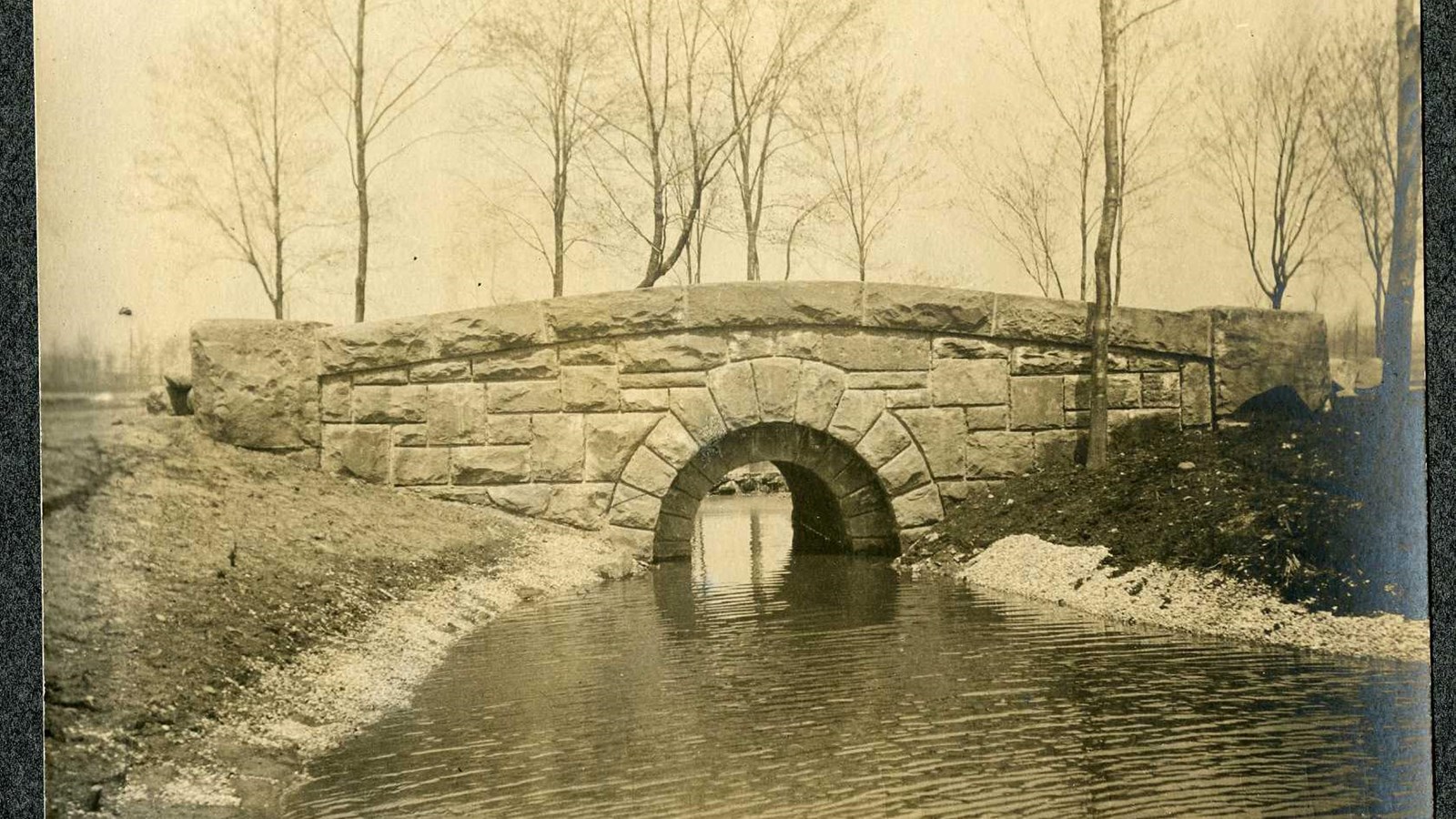Last updated: May 24, 2024
Place
Branch Brook Park

Olmsted Archives, Job #02121, Newark, NJ
Quick Facts
During the Civil War, the area that would become Branch Brook Park was serving as an encampment for several regiments as they prepared to fight in some of the most important battles of the war, from Antietam to Appomattox.
In 1867 the war was over and New Jersey State legislature established the Newark Park Commission to locate grounds for a city park. The Commission would ask Frederick Law Olmsted Sr. to visit Newark and recommend the best possible site for park; he choose the Branch Brook area.
While Olmsted Sr, along with Calvert Vaux, would envision Branch Brook Park as the Central Park of Newark, it was Olmsted Brothers who would take over the project in 1898, and create a plan for the park.
Olmsted Brothers faced challenges immediately, for in the years since Olmsted Sr.’s original recommendation, another landscaping firm had taken over the design, opting for a more gardenesque style with numerous architectural elements, something Olmsted hated and taught his sons to as well.
Adapting to these changes, Olmsted Brothers cleverly designed a plan splitting Branch Brook Park into three divisions. The Southern division would incorporate the elaborate gardenesque elements brought in by the previous firm. The Middle division would serve as a transitional zone, mixing exotic plantings with those more natural to the area. The Northern division was the largest, and most naturalistic of the divisions.
Olmsted Brothers took some time off from Branch Brook Park but were called in again in 1927 to lay out the two thousand Japanese flowering cherry trees donated to site to rival the trees in Washington, D.C. Laying the trees out on tiered slopes along the river ensured that none would dominate the other, but flow together in harmony.
Source: "Branch Brook Park," The Cultural Landscape Foundation
For more information and primary sources, please visit:
Olmsted Research Guide Online
Olmsted Archives on Flickr
Olmsted Network
In 1867 the war was over and New Jersey State legislature established the Newark Park Commission to locate grounds for a city park. The Commission would ask Frederick Law Olmsted Sr. to visit Newark and recommend the best possible site for park; he choose the Branch Brook area.
While Olmsted Sr, along with Calvert Vaux, would envision Branch Brook Park as the Central Park of Newark, it was Olmsted Brothers who would take over the project in 1898, and create a plan for the park.
Olmsted Brothers faced challenges immediately, for in the years since Olmsted Sr.’s original recommendation, another landscaping firm had taken over the design, opting for a more gardenesque style with numerous architectural elements, something Olmsted hated and taught his sons to as well.
Adapting to these changes, Olmsted Brothers cleverly designed a plan splitting Branch Brook Park into three divisions. The Southern division would incorporate the elaborate gardenesque elements brought in by the previous firm. The Middle division would serve as a transitional zone, mixing exotic plantings with those more natural to the area. The Northern division was the largest, and most naturalistic of the divisions.
Olmsted Brothers took some time off from Branch Brook Park but were called in again in 1927 to lay out the two thousand Japanese flowering cherry trees donated to site to rival the trees in Washington, D.C. Laying the trees out on tiered slopes along the river ensured that none would dominate the other, but flow together in harmony.
Source: "Branch Brook Park," The Cultural Landscape Foundation
For more information and primary sources, please visit:
Olmsted Research Guide Online
Olmsted Archives on Flickr
Olmsted Network
